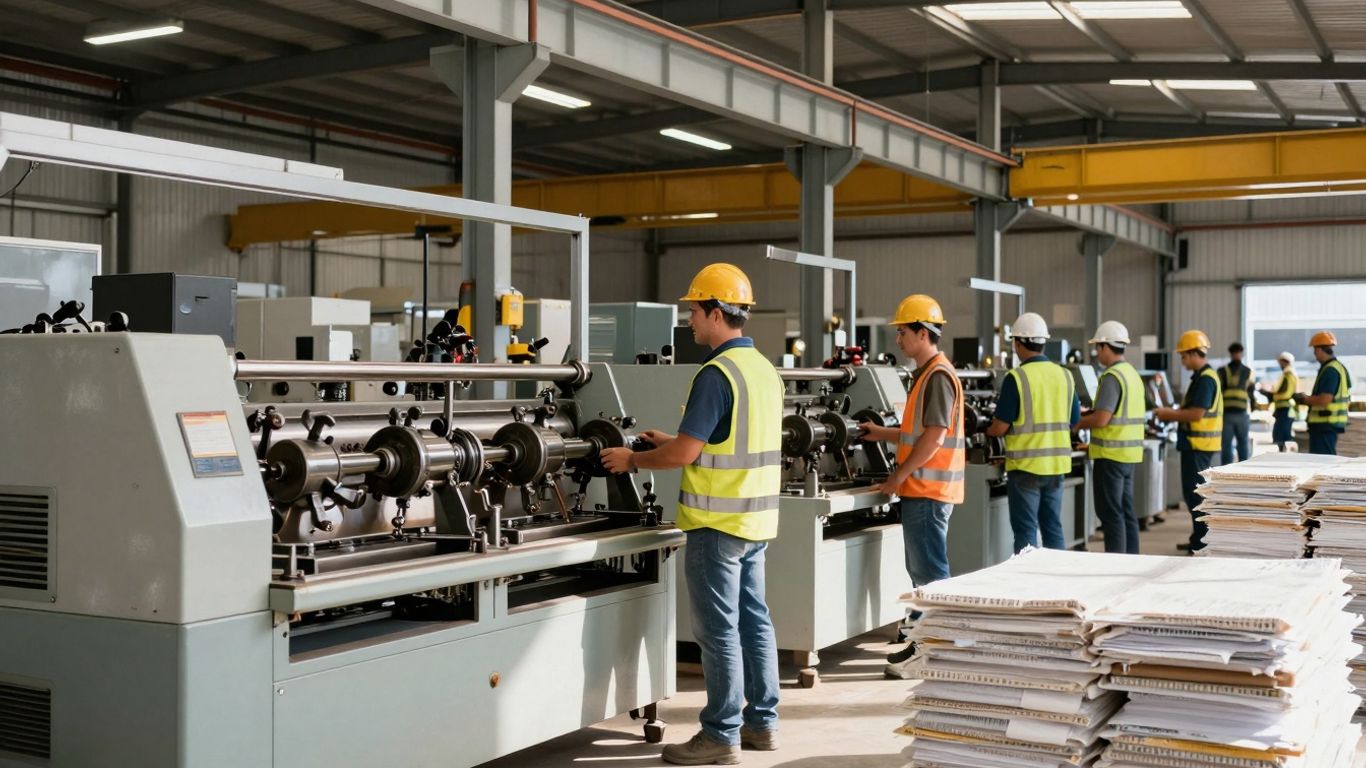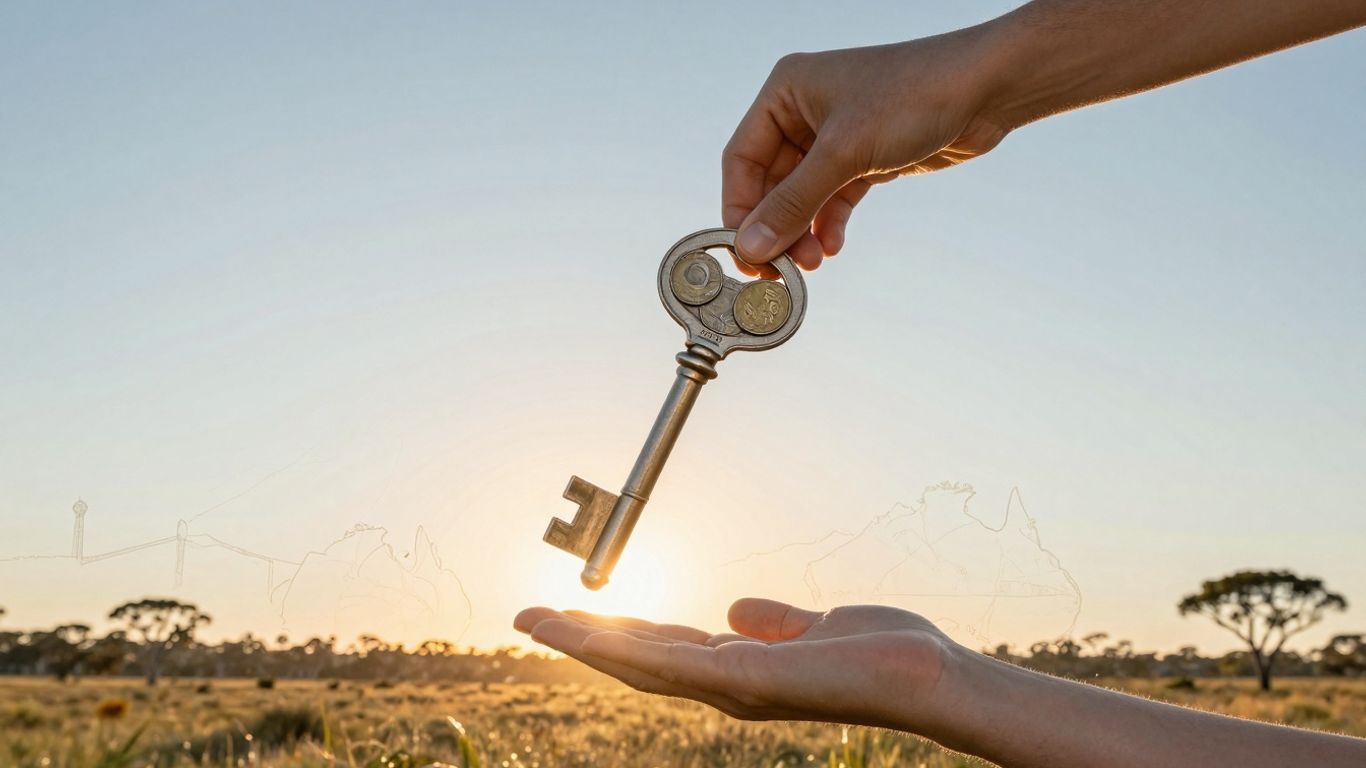Right then, tax time is rolling around again for 2025, and there are a few bits and pieces that have changed, especially if you’re on a lower income. It’s not always the most exciting topic, I know, but understanding things like the low income offset 2025 Australia can actually mean a bit more cash in your pocket. We’ll break down what’s new with the tax brackets and how certain offsets work, so you can get the best possible return this year. Let’s get stuck in.
Key Takeaways
- The Low Income Tax Offset (LITO) can reduce your tax bill if your taxable income is below $66,667, with the full $700 benefit applying to incomes up to $37,500.
- New income tax brackets are in place from 1 July 2024, potentially increasing take-home pay for many Australians.
- The ATO is using more data-matching technology, so keeping accurate records for deductions like work-from-home expenses is more important than ever.
- Tax offsets directly reduce the amount of tax you owe, unlike deductions which reduce your taxable income first.
- Organising your financial records throughout the year and understanding which offsets you’re eligible for can help maximise your tax refund.
Understanding the Low Income Tax Offset 2025 Australia
Let’s get down to basics with the Low Income Tax Offset, or LITO, for the 2025 financial year. It’s a bit of a helping hand from the government for folks who aren’t earning a huge amount. Think of it as a way to reduce the tax you actually have to pay, not your income itself. It’s not like a deduction, which lowers your taxable income first. Instead, an offset directly chops down the tax bill you’re left with after your income is taxed.
What is the Low Income Tax Offset (LITO)?
The LITO is designed to make the tax system a bit fairer for those on lower incomes. If your taxable income is $66,667 or less, you’re generally in the running for some LITO. The most you can get is $700, and that’s if your taxable income is $37,500 or less. For those earning between $37,501 and $45,000, the offset starts to decrease. It goes down by 5 cents for every dollar you earn over $37,500. After $45,000, it reduces further, by 1.5 cents for each dollar over $45,000, until it disappears completely for incomes above $66,667. Essentially, the lower your income, the more LITO you can receive, up to that $700 maximum.
How LITO Differs from Tax Deductions
It’s easy to mix up tax offsets and tax deductions, but they work quite differently. Deductions, like claiming work-related expenses, reduce your taxable income. So, if you earn $50,000 and have $2,000 in deductions, your taxable income becomes $48,000. Then, tax is calculated on that $48,000. A tax offset, like LITO, comes into play after your tax is calculated. It’s a dollar-for-dollar reduction of the tax you owe. So, if your tax bill comes to $1,000 and you’re eligible for a $700 LITO, your final tax payable is just $300. Remember, LITO is non-refundable, meaning it can only reduce your tax to zero; you won’t get any leftover offset back as a refund. You can find more details on how tax is calculated on the ATO website.
Eligibility Criteria for LITO
To be eligible for the Low Income Tax Offset in 2025, you need to be an Australian resident for tax purposes. Your taxable income is the main factor. As we’ve touched on, the amount of LITO you get depends on where your taxable income falls within these brackets:
| Taxable Income | LITO Amount |
|---|---|
| $37,500 or less | $700 |
| $37,501 – $45,000 | $700 minus (Taxable income above $37,500 x 5%) |
| $45,001 – $66,667 | $325 minus (Taxable income above $45,000 x 1.5%) |
| More than $66,667 | Nil |
It’s worth noting that if you’re eligible, the ATO usually applies the LITO automatically when you lodge your tax return, so you don’t typically need to claim it separately. However, keeping good records is always a smart move, just in case.
The Australian tax system has several layers, and understanding how offsets fit in can really help you get the best outcome. It’s not just about what you earn, but how the system treats that income.
Navigating the New Tax Landscape for 2025
The Australian tax landscape is always shifting, and 2025 is no different. With some significant changes kicking in, it’s a good idea to get a handle on what’s new so you can make sure you’re not missing out on any benefits or, worse, getting caught out. The government has tweaked the income tax brackets, and these changes really started from July 2024, so they’ll be fully in play for your 2025 return.
Key Changes to Income Tax Brackets
So, what’s actually changed? Well, the big news is the revised Stage 3 tax cuts. For most Aussies earning between $45,000 and $135,000, this means a bit more money in your pocket each week. The tax-free threshold is still $18,200, which is handy. But the next bracket, from $18,201 up to $45,000, is now taxed at 16%, down from 19%. Then, the new 30% bracket covers incomes from $45,001 to $135,000. This used to be split into a 32.5% and a 37% rate, so it’s a noticeable shift. After that, it’s 37% for income between $135,001 and $190,000, and 45% for anything over $190,000.
Here’s a quick look at the main brackets for 2025:
| Income Range | Tax Rate |
|---|---|
| $0 – $18,200 | 0% |
| $18,201 – $45,000 | 16% |
| $45,001 – $135,000 | 30% |
| $135,001 – $190,000 | 37% |
| $190,001+ | 45% |
Impact of Stage 3 Tax Cuts on Your Pay
What does this mean for your actual pay packet? If you’re earning, say, $90,000 a year, you’re looking at saving around $1,929 in tax compared to last year. It’s not a massive amount, but it all adds up, right? This change is designed to put more money into the hands of everyday Australians, which is always a good thing. It’s worth checking your payslip to see how these new rates are affecting your take-home pay. Remember, the Low and Middle Income Tax Offset (LMITO) finished up a couple of years ago, but these new brackets do help a lot of people in that income range.
The ATO is getting pretty serious about data matching these days. They’re using AI and all sorts of tech to keep tabs on income from various sources, including side hustles and online work. So, if you’re earning money from things like blogging, influencing, or even selling stuff online, make sure you’re reporting it all accurately. They’re pretty good at spotting undeclared income, and you don’t want to be dealing with penalties or audits.
ATO’s Digital Initiatives and Data Matching
Speaking of the ATO, they’re really pushing their digital services. The myGov platform is your best friend here. It’s got pre-filled information from your employer, banks, and even crypto transactions, making it easier to get your return done. They’re also keeping a close eye on things like work-from-home claims and rental property deductions, so having good records is key. If you’re claiming the fixed rate for working from home, that’s now 67 cents per hour. For rental properties, they’re really scrutinising the difference between repairs and actual improvements, and how you split interest expenses if you’ve got a mortgage redraw. It’s all about making sure everything is above board. Staying on top of your records means you can claim what you’re entitled to and avoid any headaches later on. You can find more information on the ATO website for all the official details.
Maximising Your Refund Through Deductions

Common Work-Related Deductions to Claim
So, you’ve got your tax return in front of you, and you’re wondering what you can actually claim back. It’s not just about the big stuff; lots of little things add up. Think about your work uniform – if it’s specific to your job and you have to wash it, you can claim laundry costs. If you’re working from home, even just a couple of days a week, you might be able to claim a portion of your internet or electricity bills. And don’t forget travel, but only for work-related trips, not your commute to the office. Keep a logbook for that. Tools and equipment you use for work, like a laptop or even a special phone, can often be claimed too. If you’ve done any courses or training that directly relate to your current job, the costs for those can usually be claimed as well. Keeping good records is the absolute key to making sure you don’t miss out on anything.
Record-Keeping Essentials for ATO Audits
Look, nobody wants to be on the ATO’s radar for the wrong reasons. The best way to avoid that is to be organised. For anything you plan to claim, you need proof. This means keeping all your receipts, whether they’re paper or digital. A lot of people use apps now to scan and store receipts, which is pretty handy. If you’re claiming things like car expenses, you’ll need a logbook detailing your trips. For home office expenses, you might need a diary or a floor plan showing your workspace. The ATO can ask for these records up to five years after you lodge your return, so don’t just chuck them out after tax time. Having everything in order means if they do have a question, you can answer it easily and get back to your life.
Timing Deductible Expenses Before Year-End
There are a few weeks left until the end of the financial year on June 30th, and if you’re smart, you can use this time to your advantage. Think about any work-related expenses you know you’ll have to pay anyway. If you can pay them before June 30th, you can claim them on this year’s tax return, which means a bigger refund sooner. This could be anything from buying new work shoes, paying for a course you’ve enrolled in, or even pre-paying for certain subscriptions related to your job. It’s a simple way to get a bit more money back in your pocket by planning ahead. If you’re looking for ways to save money in general, looking at cashback programs can also help reduce your overall expenses throughout the year.
Making sure you claim all your eligible deductions is a really straightforward way to boost your tax refund. It’s not about finding loopholes; it’s about making sure the tax office knows about the money you’ve spent to earn your income.
Leveraging Tax Offsets for a Bigger Return

The Role of the Low-and-Middle-Income Tax Offset
Okay, so we’ve talked about deductions, but let’s get into the good stuff: tax offsets. Think of these as direct discounts on the tax you actually owe. The Low-and-Middle-Income Tax Offset, or LMITO as it’s often called, is a big one for many Aussies. It can knock a decent chunk off your tax bill, up to $1,263 for the 2025 financial year if your income falls within the right range. It’s not a deduction that lowers your taxable income; it’s a straight reduction of your tax payable. So, if you’re earning between $48,000 and $126,000, this offset is automatically factored in when you lodge your return. It’s designed to help ease the tax burden for those in the middle income brackets.
Other Key Tax Offsets for 2025
Beyond LMITO, there are a few other offsets you might be eligible for. The Seniors and Pensioners Tax Offset (SAPTO) is there for those who qualify based on age and income, potentially reducing their tax to zero in some cases. If you live in a remote or isolated area, you might be able to claim the Zone Tax Offset. And if you have private health insurance, the Private Health Insurance Rebate can also reduce your overall tax liability. It’s worth checking your specific circumstances to see if any of these apply to you.
How Offsets Directly Reduce Your Tax Bill
This is where offsets really shine. Unlike deductions, which lower the amount of income the ATO taxes, offsets reduce the actual tax you owe, dollar for dollar. So, if you owe $3,000 in tax and you’re eligible for a $700 tax offset, your tax bill drops to $2,300. This directly increases your refund. It’s a bit like getting a discount at the checkout – the price of the item (your tax) goes down. Understanding these offsets is key to maximising the money you get back.
Here’s a quick look at how they work:
- Deductions: Reduce your taxable income. Example: Claiming $2,000 in work expenses reduces your taxable income by $2,000.
- Offsets: Reduce your tax payable directly. Example: A $700 offset reduces your tax bill by $700.
It’s important to keep good records for all your expenses, whether they’re for deductions or to prove eligibility for certain offsets. This helps avoid any issues if the ATO decides to look closer at your return. For those looking at property investment, understanding deductible costs like mortgage interest is also a smart move to boost your overall financial position.
Keeping your financial records organised throughout the year is probably the most important step you can take. It makes claiming deductions and understanding your offset entitlements so much easier when tax time rolls around. Don’t leave it all until June 30th!
Strategic Steps for a Smarter Tax Return
Getting your tax return sorted doesn’t have to be a headache. It’s actually a prime chance to get some extra cash back in your pocket. Think of it as a financial health check-up for the year. By being organised and knowing what to look for, you can make sure you’re not missing out on any money you’re entitled to.
Organising Your Financial Records Year-Round
This is probably the most important step, honestly. Instead of scrambling at the last minute, try to keep your financial paperwork in order throughout the year. This means keeping track of all your income statements, receipts for work-related expenses, and any other documents that might be relevant. Digital is your friend here – use apps or cloud storage to keep everything tidy and easy to find. For work-related expenses, you can now claim a $1,000 instant tax deduction from April 13, 2025, so make sure you’re keeping records for anything that qualifies for this deduction.
Utilising ATO Tools and Online Resources
The Australian Taxation Office (ATO) actually has some pretty handy tools available. The myGov portal is a great starting point. You can link your ATO account there to lodge your return, check your refund status, and see pre-filled information from your employer and banks. This pre-filled data can save you heaps of time and reduce the chance of making mistakes. They also have a tax withheld calculator which is useful for checking if your PAYG withholding is about right.
When to Seek Professional Tax Advice
While many people can do their own tax returns, sometimes it’s worth getting a professional involved. If your tax situation is a bit complicated – maybe you’ve got income from different sources, or you’re self-employed – a registered tax agent can be a lifesaver. They know the ins and outs of the tax laws and can often spot deductions or offsets you might have missed. Plus, they can handle any tricky questions the ATO might have.
Being proactive with your tax affairs throughout the year, rather than just at tax time, can make a big difference to your refund and your overall financial peace of mind.
Key Considerations for Low Income Earners
LITO Income Thresholds Explained
So, you’re earning a bit less and wondering about the Low Income Tax Offset (LITO) for 2025? It’s good to know the numbers. Basically, if your taxable income is $37,500 or less, you’re looking at the full $700 LITO. Things change a bit as your income goes up. Between $37,501 and $45,000, the offset reduces by 5 cents for every dollar you earn over $37,500. Then, for incomes between $45,001 and $66,667, it reduces by 1.5 cents for every dollar over $45,000. If you earn more than $66,667, unfortunately, you won’t get any LITO. It’s all about how much taxable income you have at the end of the day.
LITO and Minors: What You Need to Know
This is where things get a bit different if you’re under 18. The ATO has special rules for minors, especially when it comes to income that isn’t from working, like money from a trust or investments. Generally, LITO can’t be used to lower the tax you pay on this kind of ‘unearned’ income. They do this to stop people from shifting income to kids just to avoid paying tax themselves. For example, if a minor earns $2,000 from investments, and that income is over $1,307, it’s taxed at a higher rate of 45%. The LITO won’t help with that $900 tax bill. However, if the income is from actual work, like a part-time job, the standard rules and the tax-free threshold usually apply, and LITO can help reduce tax on that earned income. It’s a bit of a minefield, so checking the specifics for your situation is a good idea.
Calculating Your Potential LITO Benefit
Let’s say your taxable income for the year is $22,000. First off, you get the tax-free threshold of $18,200. So, the amount of income that actually gets taxed is $22,000 minus $18,200, which equals $3,800. Your tax rate on this amount is 16%, so that’s $608 in tax. Now, because your income is well below $37,500, you’re eligible for the full $700 LITO. Since your tax bill is only $608, the LITO reduces your tax payable to $0. Remember, LITO can only reduce your tax to zero; you can’t get a refund for any LITO you don’t use. It’s a great help for low-income earners, effectively meaning you pay no tax on that income level. It’s worth looking into how these offsets can affect your overall tax situation, especially when considering your household income.
It’s important to remember that tax offsets are different from tax deductions. Deductions lower your taxable income, while offsets are subtracted directly from the tax you owe. Both are good, but they work in different ways to reduce your final tax bill.
Wrapping Up: Making the Most of Your 2025 Tax Return
So, that’s a look at how things are shaping up for tax time in 2025. The new tax brackets mean more money in the pockets of many Aussies, and remembering to claim all your work-related expenses and any offsets you’re entitled to can really make a difference to your refund. It’s not about finding magic loopholes, just making sure you’re organised and claim what’s yours. Keep your receipts, check what you can claim, and don’t be afraid to ask for help if you’re unsure. Getting your tax return right means you’re not missing out on money that could be better used elsewhere, whether that’s paying down debt or saving for something special.
Frequently Asked Questions
What exactly is the Low Income Tax Offset (LITO)?
The Low Income Tax Offset, or LITO, is a helping hand from the government. If you earn a lower income, it can reduce the amount of tax you have to pay. Think of it like a discount on your tax bill. It doesn’t give you money back if you don’t owe any tax, but it can make your tax bill smaller, or even zero.
How is LITO different from tax deductions?
No, LITO is different from deductions. Deductions are things you spent money on for work or study, like work clothes or a course. These reduce the amount of income you’re taxed on. LITO, on the other hand, is a direct discount applied *after* your tax is calculated, lowering the final tax amount you owe.
Who can get the Low Income Tax Offset (LITO)?
To get LITO, you generally need to be an Australian resident and have a taxable income below a certain amount. For the 2025 year, if your income is $37,500 or less, you get the full benefit. The amount you get slowly decreases as your income goes up, and you stop getting it if your income is over $66,667.
What are the big changes to income tax for 2025?
The government changes tax rules sometimes. For 2025, the main changes are to the income tax brackets. This means how much tax you pay on different amounts of income has shifted. For many people earning between $45,000 and $135,000, their take-home pay might increase because the tax rate in that range has gone down.
Why is keeping good records so important for my tax return?
It’s super important to keep all your receipts and records for anything you plan to claim. This could be for work-related expenses like tools or uniforms, or even records for work-from-home costs. The tax office (ATO) can ask to see these records if they want to check your tax return, so having them organised helps you prove your claims.
Can I claim deductions for things like work clothes or study?
Yes, you can claim deductions for things like work uniforms, tools you need for your job, or study courses that help you at work. If you work from home, you might be able to claim a portion of your internet or electricity bills. Even donations to charities can be claimed. Just make sure you have proof!





